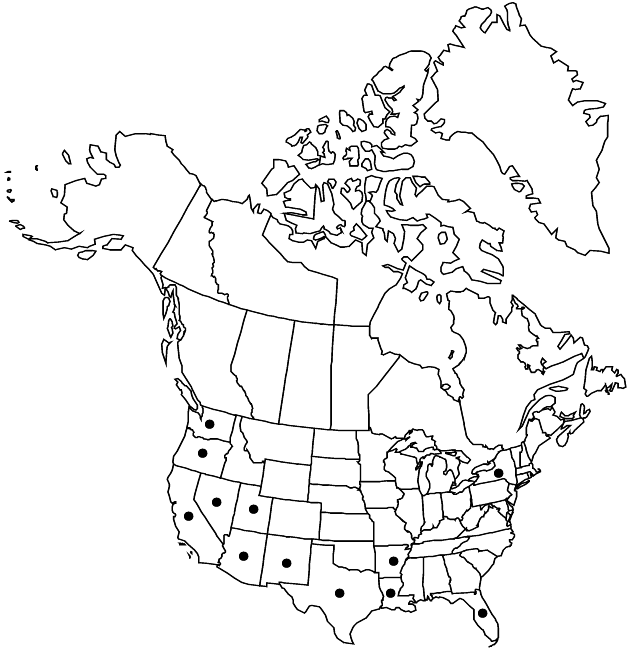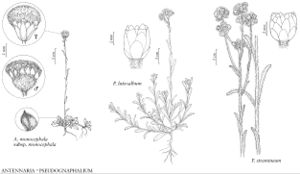Pseudognaphalium luteoalbum
Bot. J. Linn. Soc. 82: 206. 1981.
Annuals, 15–40 cm; taprooted or fibrous-rooted. Stems loosely white-tomentose, not glandular. Leaf-blades (crowded, internodes 1–5, sometimes to 10 mm) narrowly obovate to subspatulate, 1–3 (–6) cm × 2–8 mm (distal smaller, oblanceolate to narrowly oblong or linear), bases subclasping, usually decurrent 1–2 mm, margins weakly revolute, faces mostly concolor to weakly bicolor, abaxial gray-tomentose, adaxial usually gray-tomentose, sometimes glabrescent, neither glandular. Heads in terminal glomerules (1–2 cm diam.). Involucres broadly campanulate, 3–4 mm. Phyllaries in 3–4 series, silvery gray to yellowish (hyaline), ovate to ovate-oblong, glabrous. Pistillate florets 135–160. Bisexual florets 5–10 (corollas red-tipped). Cypselae not evidently ridged (conspicuously dotted with whitish, papilliform hairs; pappus bristles loosely coherent basally, released in clusters or easily fragmented rings). 2n = 14, 16, 28.
Phenology: Flowering Apr–Oct.
Habitat: Roadsides, fields and pastures, ditches, streambanks, seasonal ponds, gardens, and other disturbed sites
Elevation: 5–2000 m
Distribution

Introduced; Ariz., Ark., Calif., Fla., La., Nev., N.Mex., N.Y., Oreg., Tex., Utah, Wash., Mexico, Europe, Asia, Africa, Pacific Islands (New Zealand), Australia
Discussion
Pseudognaphalium luteoalbum is native to Eurasia. It is similar in overall habit to P. stramineum but distinctive in its larger heads and red-tipped corollas (visible through the translucent phyllaries). Cypselae of P. luteoalbum have papilliform hairs; cypselae of other North American species of Pseudognaphalium are glabrous.
Selected References
None.
